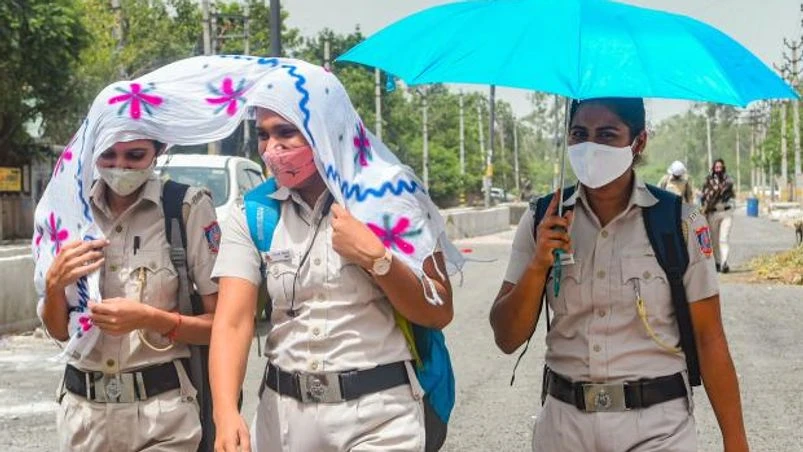 What is a heat wave?
What is a heat wave?
May is the month when heat waves are brutal in northern India. The weatherman has said that mercury will soar further this week. But what exactly is a heat wave?
)
Photo: PTI
A severe heatwave that is sweeping through large swathes of India has pushed temperatures above 45 degrees Celsius in several places in north and central India.
Heatwaves have caused 24,223 deaths from 1992 to 2015 across the country, as per official records. The India Meteorological Department qualitatively describes heatwave as a condition of air temperature which becomes fatal to the human body when exposed.
Quantitatively, it is defined based on the temperature thresholds over a region in terms of actual temperature or its departure from normal.
A heatwave is considered if the maximum temperature of an IMD weather station reaches at least 40C or more for plains and at least 30C or more for hilly regions.
A 4.5 to 6.4-degree departure from normal is considered to declare a heatwave and a more than 6.4-degree departure for a severe heatwave.
And, when the maximum temperature is equal to or above 45°C, it is a heatwave, while if it's 47°C or above, it is a severe heatwave.
The above criteria should be met at least in 2 stations in a Meteorological sub-division for at least two consecutive days to declare a heat wave. Heat waves usually occur in the months of March to June and in some rare cases even in July. The peak month of the heat wave over India is May.
More From This Section
Heat waves generally occur over plains of northwest India, Central, East and north Peninsular India. It covers Punjab, Haryana, Delhi, Uttar Pradesh, Bihar, Jharkhand, West Bengal, Odisha, Madhya Pradesh, Rajasthan, Gujarat, parts of Maharashtra and Karnataka, Andhra Pradesh and Telangana. Sometimes it occurs over Tamilnadu and Kerala also.
However, maximum temperatures more than 45°C are observed mainly over Rajasthan and Vidarbha region.
IMD’s network of surface observatories covering the entire country measure various meteorological parameters like temperature, relative humidity, pressure, wind speed and direction etc. Based on daily maximum temperature station data, climatology of maximum temperature is prepared for the period 1981-2010 to find out the normal maximum temperature of the day for a particular station. Thereafter, IMD declares a heatwave over the region as per its definition.
The health impact of heat waves typically involves dehydration, heat cramps, heat exhaustion and heat stroke.
The IMD uses four colour codes for weather warnings. Green means no action needed, yellow refers to watch and stay updated, orange means be prepared while red alert means take action.
Watch video
Also Read
Don't miss the most important news and views of the day. Get them on our Telegram channel
First Published: May 02 2022 | 7:00 AM IST

